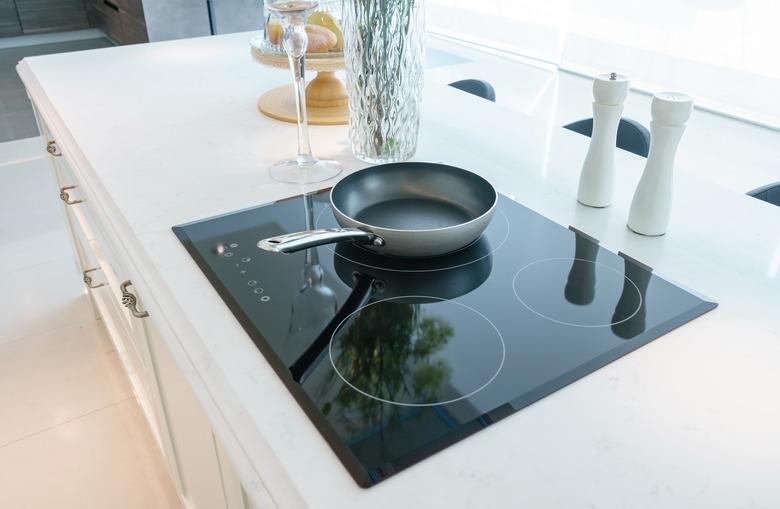How To Remove Cloudy Burners On A Glass Stove
Sleek and shiny, a glass stove top gives a modern and clutter-free look to a kitchen space. The ceramic stove top is easy to use and clean on a regular basis. However, spills and stains can build on the slick surface and require a deep clean.
The expanse of gleaming glass can quickly become an eyesore when crumbs, droplets and other stains collect on the stove top. Cleaning the cloudy stove glass with harsh sponges, cleaners and techniques can ruin the glass stove top's aesthetic, if not its function.
Prepping the Stove Top
Before you spray or squirt a grease-cutting cleaner onto the surface of the glass stove top, make sure that the surface is completely cool. If the stove top is hot, the cleaner can evaporate, bubble or burn onto the glass surface.
Have soft, clean and dry cloths ready to quickly wick away detergents and water droplets that can leave streaks or unsightly spots on the cooktop.
What Not to Use
Using the wrong types of cleaners and techniques can create permanent damage to the appliance or scratch the surface and create a haze. Always consult the owner's manual before using any chemical or commercial cleaner on the glass cooktop. Some ranges can be very specific about the type of cleaning product you can use on that brand of ceramic stove top.
While the stove top is relatively resilient, it can still get scratched by rough brushes and scouring pads. Avoid hard nylon brushes or sponges and stay away from steel wool all together, according to CNET.
It may be tempting to reach for a name brand glass cleaner known for quickly removing water spots and stains. However, most glass cleaners contain ammonia, which can damage the stove top. Residue from chemical cleaners can burn off when you use the stove top. In large quantities, the residue can cause respiratory issues.
Glass Stove Top Approved Cleaners
The glass stove top can get a good shine from microfiber cloths and sponges paired with a natural cleaner, such as vinegar, according to Merry Maids. Fill a spray bottle with straight vinegar and spritz the cooled stove top with a fine layer of the vinegar. Wipe it away with a microfiber cloth.
Buff the stove top dry and repeat if necessary. For daily maintenance, you can use plain water spritzed onto the cooled down cooktop. Just wipe it down and buff to a high sheen.
To remove haze from the cooktop, spray the surface down with vinegar and cover the top with a good sprinkling of baking soda. Place a hot, damp towel over the stove top and allow it to sit for 15 minutes. Wipe up the baking soda with a soft sponge or damp towel and spray the surface with vinegar again. Buff out any streaks with a microfiber cloth.
Can't Remove Haze From Cooktop
If you can't remove the haze from the cooktop, it may have been scratched by rough scrubbers or discolored by commercial cleaners. A black glass top stove with discoloration that hasn't disappeared after cleaning may need to be replaced.
Don't put a lot of pressure on the glass stove top in your attempt to remove a tough, burnt-on stain. If you put too much pressure on the seemingly durable structure to remove a layer of stubborn haze, then it can get cracked and need to be replaced.
